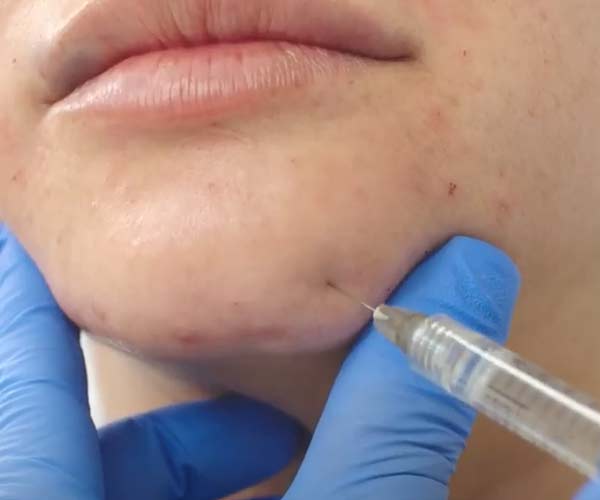Cosmetic Treatments for the Chin: Botox® Chin Dimpling & More
By Dr. Stephen Cosentino
PRESIDENT OF EMPIRE MEDICAL TRAINING
Chin dimpling affects millions of Americans. The distinctive “orange peel” appearance of the chin skin becomes more apparent as we age. It’s most commonly caused by a hyperactive mentalis muscle, a large chin muscle that controls the lower lip.
Is there anything to be done about it?
Actually, yes. Botox® is a reliable (if temporary) and safe treatment for dimpled chin. Targeted Botox injections can temporarily relax the mentalis muscle and allow the overlying skin to regain a smoother, more natural-looking appearance.
If you’re considering Botox chin dimpling treatments, here’s what you should know first.
Botox Chin Dimpling Treatments: What to Expect
Botox is a routine treatment for chin dimpling, and the procedure itself is routine as Botox injections go.
Where Is Botox Injected for Chin Dimpling?
The main chin area injection site is the mentalis muscle, which controls the lower lip and is the usual cause of chin dimpling. The injector may target several sites on the mentalis muscle while taking care not to affect neighboring muscles, which can cause unwanted side effects.
How Much Botox Is Required for Chin Dimpling?
Botox treatments for chin dimples and wrinkles typically involve 2 to 6 units of Botox, depending on the size of the affected area and the depth of the dimpling.
This is a relatively small dose. Botox treatments for forehead lines and other upper-facial complaints may require five times that amount (or more).
Botox Injections for Chin Wrinkles: How Treatment Works
Botox injections for chin dimpling typically take 15 to 30 minutes. The formulation includes a topical anesthetic that numbs the injection site, so an initial lidocaine injection isn’t necessary.
The injection itself relaxes the mentalis muscle over a period of days following treatment. Full results should appear within a week or two and persist for 3 to 6 months.
Recovery time is minimal and you can generally resume normal activity within 24 hours. Be sure to listen to your provider’s post-treatment instructions, however. It’s best to avoid heavy exertion in the hours after treatment, for example.
Risks of Botox Procedures for Chin Dimpling and Wrinkling
While Botox is much safer than traditional plastic surgery, side effects can and do occur after treatment. The most common include reactions or sensations around the injection site, such as:
- Itching
- Mild burning
- Mild swelling
- Redness
- Mild bleeding
More profuse bleeding, redness that’s also tender or painful to the touch, and severe swelling may be signs of an infection that requires medical treatment.
More serious side effects are rarer, but it’s important to watch for:
- Allergic reaction, most often to the topical anesthetic
- Difficulty speaking
- Difficulty breathing
- Incontinence
- Muscle weakness elsewhere on the body
These complications require immediate medical attention.
Finally, “botched” Botox is uncommon but certainly unwelcome. For chin treatments, the most common complications are lopsided or “frozen” smiles, where one corner of the mouth droops noticeably lower than the other. There’s no antidote for Botox, so you can either wait it out (three to six months) or see another provider for a follow-up treatment that may obscure the effect.
These potential side effects and complications may also appear after Botox treatment for other chin complaints, such as cleft chin and double chin. In all cases, you can reduce your risk by working with a licensed Botox injector — a plastic surgeon, dermatologist, registered nurse, or other board certified medical provider — who has completed a comprehensive Botox training course.


